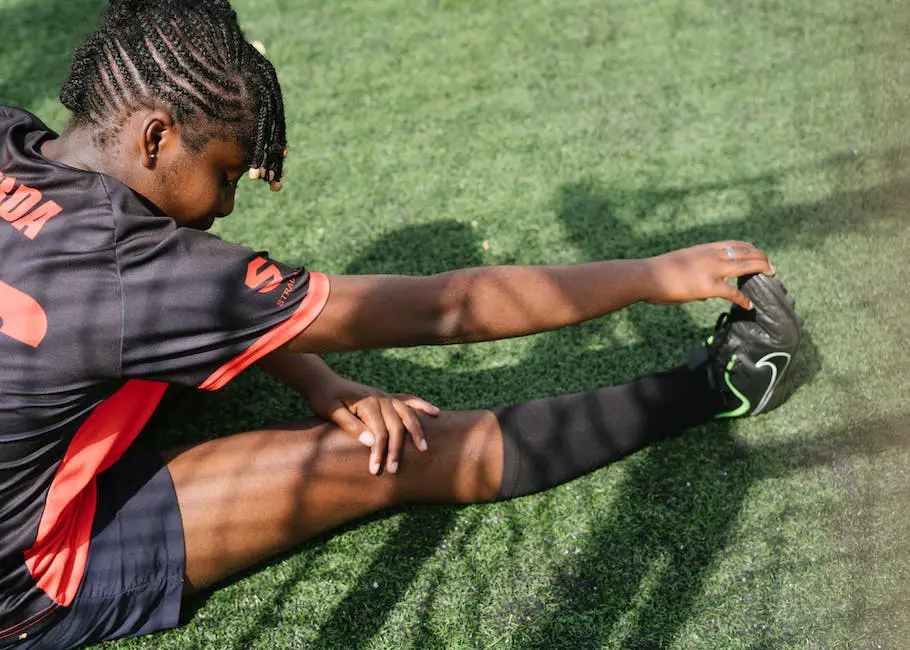Tennis, widely celebrated as a physically demanding sport, fuels the need for utmost conditioning and fitness. A comprehensive understanding of these aspects helps enhance performance, agility, and longevity in the sport. This guide discusses the in-depth details about tennis conditioning and fitness, from basic aspects to specific conditioning exercises, relevant nutritional guidance, preventive measures against injuries, recovery practices, and a step-by-step guide to crafting tailor-made training plans. Each topic examined here underscores the significance of proficiency in different facets of the game and overall wellbeing, aiming to assist in improving your tennis performance and experience.
Basics of Tennis Conditioning and Fitness
The Physical Demands of Tennis
Tennis is a high-intensity sport that requires various physical skills. The game can last anywhere from an hour to several hours, and starts and stops frequently. It involves running at different speeds, stopping, starting, hitting, planning, and sprinting. Tennis players need a high level of physical fitness to meet these demands.
Endurance in Tennis
Endurance is an essential component in tennis as matches can last for a long period, from an hour or more. It is crucial for a player to maintain a high level of energy throughout the match. Cardiorespiratory fitness can be improved by participating in exercises like running, cycling, or swimming. These exercises benefit players by enabling the heart, lungs, and muscles to work effectively even under high-tempo match conditions.
Agility in Tennis
Agility is the ability to change the direction of the body rapidly and efficiently. In tennis, players need to be agile enough to move quickly across the court to respond to the opponent’s hits. Agility can be improved by practice drills such as ladder drills, box jumps, and side-to-side shuttles.
Strength in Tennis
Strength training is essential in tennis as it decides how fast and with how much power a player can hit the ball. A strong player will be able to hit powerful shots even at the final stages of a match. Exercises such as resistance band workouts, weight lifting, and bodyweight exercises such as push-ups and squats can help improve upper and lower body strength.
Flexibility in Tennis
Flexibility is the range of motion in a joint or series of joints. It is crucial in tennis as players need to stretch and reach out to hit the ball. A good range of motion can also help prevent injuries by reducing the stress on the muscles during sudden movements. Flexibility can be improved by consistent stretching exercises before and after training.
Importance of Proper Conditioning and Fitness
Having a high level of fitness is necessary for peak performance in tennis. A fit tennis player can withstand the long duration of the match, can sprint when necessary, and can still be able to hit the ball with power even in the final moments of the match. Conditioning is equally crucial as it prepares the body for this high level of activity and helps to prevent injuries.
Specific Fitness Training for Tennis
For any tennis player, you should incorporate specific fitness training into your regimen, including cardio, strength training, flexibility exercises, and agility drills. For cardio training, short, intense bursts of energy, such as interval training, align best with the physical needs of tennis. For strength training, you should focus on full-body workouts, with an emphasis on your core, legs, and arms. Flexibility exercises such as yoga can help improve your range of motion and performance on the court. Agility drills, meanwhile, will help you increase your speed and quickness, allowing you to get to the ball faster and change direction quickly in response to your opponent’s hits.
Nutritional Priorities for Tennis Players
Proper nutrition plays a vital role in the fitness and conditioning of tennis players, with an emphasis on a balance of protein, carbohydrates, and healthy fats. The intensity of the sport requires players to stay well-hydrated, considering the large amount of sweat produced. Combined with appropriate physical training, a nutritionally balanced diet significantly enhances the conditioning and overall health of a player.

Specific Conditioning Exercises for Tennis
Focused Conditioning for Enhanced Tennis Performance
Given the physically demanding nature of tennis, sport-specific conditioning is critical. The need for exceptional cardiovascular endurance, agility, speed, strength, and mobility makes tailored, tennis-specific training a necessity. Such conditioning is designed not only to boost on-court performance but also to minimize the risk of injury.
Stamina Enhancement Drills
Improving stamina, or aerobic endurance, is crucial for tennis players as it allows the body to continuously deliver oxygen to muscles during gameplay. This attribute results in efficient recovery and cushioning of fatigue onset, enabling sustained performance over a prolonged period.
To enhance stamina, interval training is one effective method. For instance, hill running drills where players sprint up an incline, then walk or jog back down to recover before repeating the sequence. This helps simulate the tennis match conditions with bursts of high-intensity movement followed by short recovery periods.
Footwork and Agility Improvement Initiatives
Footwork and agility drills could be instrumental in enhancing a player’s ability to start, stop, and change directions quickly. This is vital in tennis due to the constant shifts in intensity, frequency, duration, and direction of movements.
Certain drills include suicides, where players sprint to and fro across the short dimensions of the tennis court. Ladder drills are also popular, in which players work through a sequence of fast-paced foot placements to develop quick, nimble steps. The use of agility cones also allow players to follow a laid down pathway, improving their ability to change directions rapidly.
Strength and Conditioning Workouts
Strength and conditioning workouts enhance a player’s hitting power, speed, stability, which are all key parts of a well-rounded tennis game.
Typically, these workouts should focus on both upper and lower body strength. Compound movements like squats, lunges, and deadlifts help build lower body strength and power for more dynamic strokes and faster motions. Upper body exercises such as push-ups, bench press, and pull-ups can improve service and stroke power.
Core work is also important, as every stroke in tennis originates or passes through the core. Exercises such as planks, sit-ups, or Russian twists can strengthen the core to enhance rotational power and stability.
Flexibility and mobility work are equally important, including stretches and yoga poses to maintain or improve range of motion and muscle elasticity.
In terms of conditioning, high-intensity interval training (HIIT) workouts interspersed with low-intensity recovery periods mimic the demands of a tennis match. This method could enhance both aerobic and anaerobic fitness levels, crucial for tennis performance.
The Impact of Tennis Conditioning on Performance and Injury Prevention
Engaging in regular and correctly performed tennis-specific conditioning exercises can bring a dramatic enhancement to a player’s performance while simultaneously reducing their injury risk. Given the unique variation in each player’s fitness level, skill set, and goals in tennis, personalized conditioning programs specifically designed for tennis are highly recommended.

Nutritional Guidance for Tennis Players
Eating Right: The Importance of Nutrition in Tennis Performance
Fitness and conditioning in tennis extend beyond the court and include crucial aspects of nutrition. It’s important for high-performance tennis players to understand and meet their distinctive dietary needs to sustain energy, speed, endurance, focus on the game, and to aid post-match recovery.
The diet of a tennis player should predominantly incorporate complex carbohydrates such as whole grains, legumes, and starchy vegetables. These carbohydrates function as the primary energy source, fueling the muscles amidst intense matches and are metabolized gradually, thereby providing a consistent energy supply throughout extended matches.
Protein plays a vital role in repairing and recovering muscles after tennis matches. Daily consumption should ideally fall between 1.2 to 2.0 grams of protein per kilogram of the player’s body weight from sources such as lean meats, fish, dairy products, and legumes.
Contrary to common beliefs, fats should not be completely excluded from a tennis player’s diet. When carbohydrate reserves are depleted, healthy fats derived from avocados, nuts, seeds, and fish can provide long-lasting energy to the body.
Beyond the macronutrients, micronutrients such as vitamins and minerals are essential for a player’s overall health and tennis performance. For example, calcium contributes to bone strength, iron supports the transportation of oxygen to muscles, while B vitamins aid in the metabolism of carbohydrates into energy.
Hydration for Tennis Players
Hydration plays a pivotal role in a tennis player’s performance and recovery. Dehydration can impede a player’s performance, causing muscle cramps, fatigue, and loss of coordination. It is crucial for tennis players to drink enough fluids before, during, and after matches to replenish lost fluids and electrolytes through sweat.
A general recommendation is to consume approximately 500ml of water 2 hours prior to matches, and continue drinking small quantities every 15-20 minutes during the match. Sports drinks can be beneficial during long and intense matches, as they contain carbohydrates for energy and electrolytes to replace what is lost through sweat.
Pre and Post-Match Eating Plans
Pre-match meals are crucial for topping up the body’s fuel stores. Ideally, this meal should be consumed 2-3 hours before the game and comprise high-carbohydrate, moderate-protein, and low-fat foods to reduce the risk of gastrointestinal discomfort. Hydration is an essential part of this meal—tennis players should drink plenty of fluids with their meal.
On the other hand, post-match nutrition is all about recovery. Within 30 minutes to two hours post-match, tennis players should consume a meal or snack that combines carbohydrates and proteins. This aids in replenishing glycogen stores and repairing muscle tissues. Hydration should continue post-match to make up for lost fluids during the game.
Grasping and applying solid nutritional knowledge can heavily impact a tennis player’s ability to perform, endure, recover, and attain optimum fitness levels.

Injury Prevention and Recovery Measures
Comprehending Typical Tennis Injuries
The physically demanding nature of tennis can put considerable strain on the body, predominantly affecting those muscles and joints repetitively put to work during a game. Tennis elbow, shoulder impingement, stress fractures, various tendinitis forms, and ankle sprains are among the typical injuries a player may encounter. These injuries are typically a result of overuse, inadequate preparation or warm-up, or incorrect technique. Thus, understanding these injuries and implementing necessary preventive measures is absolutely fundamental.
Importance of Injury Prevention
Injury prevention is a key aspect in maintaining longevity and wellness in tennis. It often involves adopting adequate warm-up and cool-down routines, correct techniques, and body conditioning relevant to the sport. Regular stretching exercises can enhance flexibility and prevent muscle strains. Strength training promotes muscle balance and boosts power, which can help to prevent injuries.
Correct technique is vital to minimize undue stress on the joints and muscles. For instance, failure to use the correct serving or swinging techniques can result in significant stress on the arm, leading to conditions such as tennis elbow.
Effective Warm-Up and Cool-Down Routines
Warm-ups play a fundamental role in conditioning the body for the physical demand of tennis. A good warm-up routine involves light cardio exercises like jogging or skipping, followed by dynamic stretches that mimic tennis strokes to get the body ready for the action.
Similarly, a cool-down phase is just as crucial as it helps to gradually lower the heart rate and aid recovery. Various static stretches targeting crucial muscle groups used in tennis would help enhance flexibility and reduce muscular tension.
Rest and Recovery Measures in Tennis
Rest and recovery measures are central to injury prevention, enabling the body to repair and strengthen itself between workouts. Adequate rest can prevent overuse injuries and ensure that players are fresh and energized for their next game.
Nutrition also plays an integral part in recovery. Consuming a balanced diet rich in protein, carbohydrates, and healthy fats supports tissue repair and energy replenishment. Hydration should not be overlooked, as tennis players lose significant fluid due to sweat, which needs to be replaced to maintain optimal body function.
Incorporating recovery exercises such as foam rolling or yoga can support muscle recovery and manage muscle soreness. Additionally, heat and ice treatment post-game can aid in minimizing inflammation and promote healing.
Addressing and Navigating through Injuries
If an injury occurs, a player’s immediate action should be to halt their activities and apply the widely-accepted RICE method – Rest, Ice, Compression, and Elevation. It’s crucial to not overlook the importance of medical intervention for a thorough diagnosis and treatment. Allowing the injury ample time to heal before jumping back into tennis is critical to avoid worsening the condition. Abstaining from early return to play can also prevent the transformation of an acute injury into a chronic issue. Based on the specific nature of the sustained injury, incorporation of certain coping mechanisms like modifying technique or adoption of supportive gear may be required.

Creating a Suitable Training Plan
Establishing Current Fitness Status for Tennis Conditioning
To devise an optimal tennis conditioning and fitness training regime, the initial step lies in understanding your current fitness stance. An evaluation of aspects such as cardiovascular health, muscular strength, overall flexibility, and agility becomes essential as they act as primary contributors to your performance on the tennis court. To help with a professional and accurate assessment, considering a fitness evaluation by a certified trainer might be beneficial. Such a precise understanding of your current fitness level can enable the formulation of realistic fitness targets, strategic scheduling of training routines designed to not only maximize performance, but also minimize the risk of injuries.
Performance Goals in Tennis Fitness Training
Setting your performance goals for tennis serves as the compass for your fitness journey. You should identify specific, measurable, achievable, relevant, and time-bound, or SMART, goals. This might include increasing hitting power, improving speed and agility, or enhancing endurance. Your goals should be aligned with your individual needs and experience level. For instance, if you’re new to tennis, your primary goal may be to learn basic strokes and to build foundational strength and endurance. If you’re an advanced player, your goals can be more specific, like improving your footwork or building explosive power for your serve.
Time Availability and Training Frequency
Taking time availability into account is critical when designing a tennis conditioning and fitness program. The amount of time you can dedicate to training determines the frequency, duration, and intensity of your workouts. Ideally, a tennis conditioning program should include at least 3 to 4 sessions per week. However, your training schedule should be flexible enough to accommodate your daily routines and commitments. In the absence of long, uninterrupted blocks of time, shorter, more frequent training sessions can be equally effective.
Designing a Comprehensive Training Plan
Upon weighing these factors, you can proceed to design a comprehensive training plan tailored to your needs. The inclusion of key training components – strength and conditioning, speed and agility, endurance, flexibility, and recovery is imperative. Strength and conditioning workouts can build power and resilience. Speed and agility drills can improve quickness, reaction time, and directional changes. Endurance exercises enhance your ability to sustain high-intensity play, while flexibility routines reduce injury risk. Recovery, an often overlooked aspect, is crucial to allow your body to heal and adapt to the training stimulus.
Regular Progress Check-ups and Schedule Adjustments
Regardless of how well-designed your training plan is, its effectiveness should undergo regular check-ups. Tracking your progress towards your fitness goals allows you to evaluate your training program and make necessary adjustments. This could involve increasing or decreasing workout intensity, modifying exercises, or altering training frequency. If continuously pushed without adequate progression or if progress plateaus, schedule changes or even complete overhauls might be necessary. Ongoing modifications as per your current performance level and feedback from your body ensure your training remains effective, challenging, and safe.
Importance of Expert Guidance
Consider seeking the advice of fitness professionals, like a personal trainer or a tennis conditioning coach, while planning and implementing a tennis fitness program. They can provide informed guidance, monitor your progress, and tweak your program as necessary, promoting optimal training results and preventing any potential misuse of exercises. Their experience and knowledge can be instrumental in your journey to being a well-conditioned tennis player.

Embracing conditioning and fitness, adopting specific exercises curated for tennis, adhering to nutritional guidance, observing injury prevention and recovery measures, and engaging a personalized training plan are not merely options but prerequisites for anyone striving for excellence in the sport. This guide aims to act as a comprehensive tool to aid in that journey. By staying informed and implementing the practices endorsed here, not only can one achieve marked improvements in the game, but also sustain a longer, healthier involvement with tennis. Such informed diligence and practical application will undoubtedly yield a performance to be proud of.